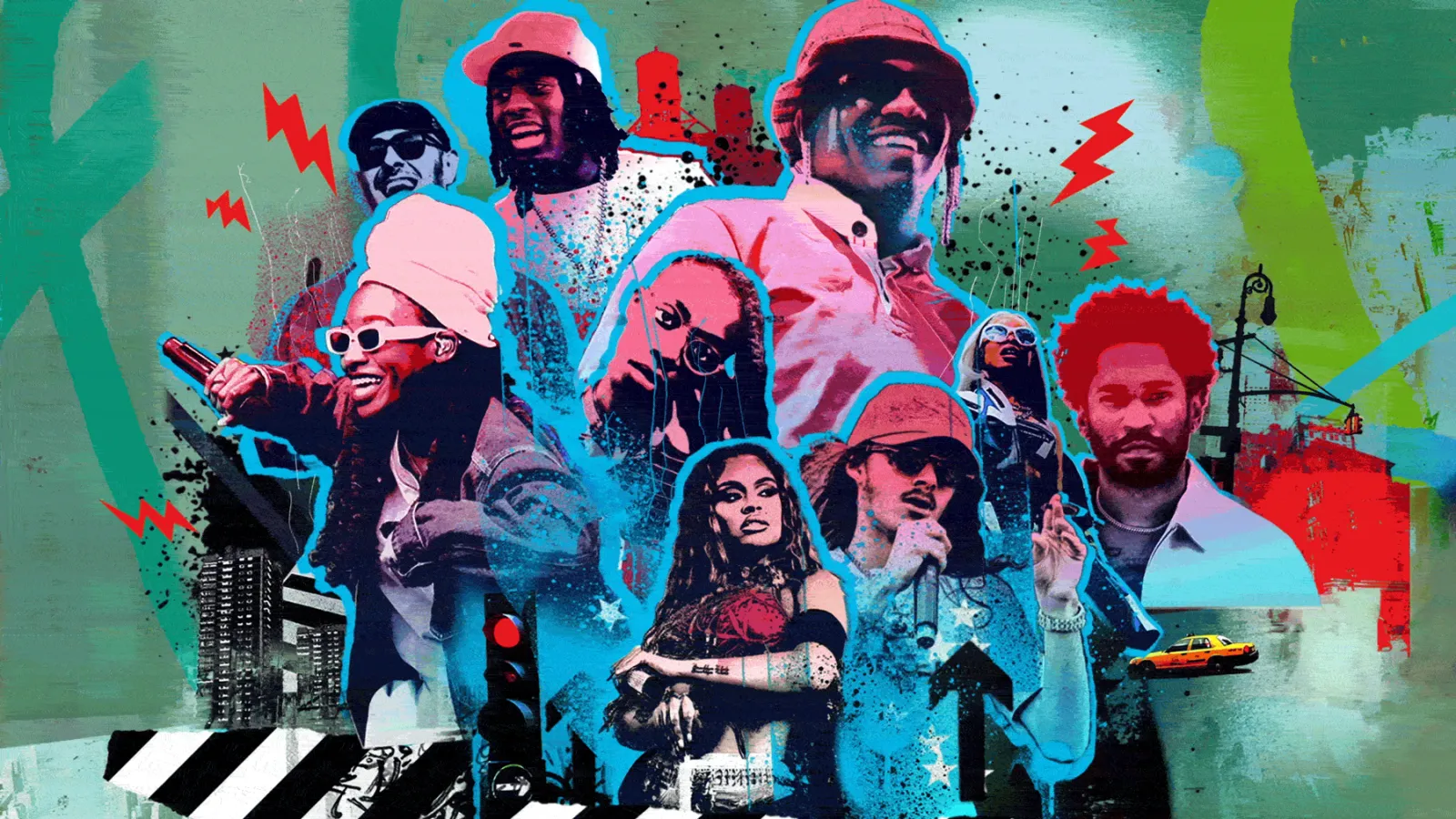The Evolution of Rap Across Different Cultures
Rap music has traveled far and wide since its inception in the Bronx during the 1970s. Initially, it served as a voice for marginalized communities, expressing struggles, hopes, and a desire for change. As it crossed borders, each culture it touched infused the genre with its unique flavor, leading to an eclectic mix of sounds and messages. From the barrios of Latin America to the bustling metropolises of Asia, rap has evolved into a dynamic global movement that reflects the diversity and complexity of the human experience.
In Africa, the birthplace of rhythm and oral tradition, rap has found a natural home. Artists from Nigeria to South Africa have embraced hip-hop, merging it with local sounds like Afrobeats and Kwaito. This fusion not only preserves cultural heritage but also offers a fresh take on the genre, making it relatable to local audiences. African rap often addresses themes of political unrest, economic hardship, and social injustice, resonating deeply with listeners who see their realities mirrored in the music.
Similarly, in Europe, rap has become a powerful tool for self-expression and activism. Countries like France and the UK have long-standing hip-hop scenes that draw on their multicultural populations. French rap, for instance, is known for its poetic lyricism and sharp social commentary, while British grime has carved out its niche with aggressive beats and rapid-fire delivery. Both styles reflect the complex identities and experiences of their creators, proving that rap can be both a mirror and a megaphone for society.
Key Characteristics of International Rap Styles
One of the most fascinating aspects of international rap is the diversity of styles that emerge from different regions. Each culture brings its own linguistic nuances, musical influences, and storytelling traditions to the genre, resulting in a rich tapestry of sounds and messages. In Latin America, for instance, rap often incorporates elements of reggaeton, salsa, and cumbia, creating a vibrant and danceable sound that appeals to a wide audience. Spanish-speaking rappers use their platform to address issues such as immigration, poverty, and identity, connecting with listeners on a deeply personal level.
In contrast, Asian rap scenes frequently blend traditional instruments and melodies with modern beats, creating an intriguing juxtaposition of old and new. In countries like South Korea and Japan, hip-hop has become a cultural phenomenon, with artists achieving mainstream success and influencing global trends. Korean rap, particularly, is known for its polished production and catchy hooks, while Japanese hip-hop often explores themes of alienation and rebellion against societal norms. Best female rappers
The Middle East and North Africa region also boasts a vibrant rap scene, where artists tackle subjects like war, displacement, and censorship. Here, rap serves as a form of resistance and empowerment, giving a voice to those who are often silenced. The use of local dialects and traditional music elements ensures that the genre remains rooted in the cultural context, making it both relevant and revolutionary. These diverse characteristics underscore the adaptability of rap, proving its ability to transcend boundaries and resonate with audiences worldwide.
Influential International Rap Artists to Watch
As rap continues to gain momentum globally, several international artists are emerging as influential voices in the genre. These artists are not only pushing the boundaries of music but also challenging societal norms and advocating for change. One such artist is Nigeria’s Burna Boy, whose fusion of Afrobeat and hip-hop has garnered international acclaim. Known for his politically charged lyrics and infectious rhythms, Burna Boy addresses issues such as inequality, corruption, and African identity, making him a powerful force in both music and activism.
In France, rapper Nekfeu has become a prominent figure in the hip-hop scene, known for his introspective lyrics and innovative sound. His ability to seamlessly blend influences from jazz, funk, and electronic music has set him apart from his peers, while his thoughtful exploration of themes like mental health and social justice resonates with a diverse audience. Nekfeu’s success highlights the universal appeal of rap and its capacity to connect people across cultural and linguistic divides.
Meanwhile, in South Korea, the rise of BTS’s RM has brought Korean rap to a global stage. As the leader of the world-renowned group, RM’s lyrical prowess and charismatic presence have captivated audiences worldwide. His exploration of themes such as self-acceptance, personal growth, and societal pressures has struck a chord with fans, demonstrating the power of rap to inspire and unite people from all walks of life. These artists, among others, are shaping the future of rap and redefining what it means to be an international superstar.
The Role of Technology in Spreading Global Rap
The digital age has revolutionized the music industry, making it easier than ever for artists to share their work with a global audience. Platforms like YouTube, Spotify, and SoundCloud have democratized music distribution, allowing international rap artists to reach listeners far beyond their local scenes. This accessibility has been instrumental in the spread of global rap, enabling artists to bypass traditional gatekeepers and connect directly with fans. As a result, diverse voices are gaining recognition and contributing to a more inclusive and representative music landscape.
Social media has also played a pivotal role in the rise of international rap, providing artists with a platform to showcase their talent and engage with their audience. Through Instagram, Twitter, and TikTok, rappers can share their music, collaborate with other artists, and build a loyal fanbase. This direct line of communication allows for a more authentic connection between artists and listeners, fostering a sense of community and solidarity. Moreover, social media has become a powerful tool for activism, enabling artists to raise awareness about important issues and mobilize support for their causes.
In addition to distribution and engagement, technology has also influenced the production and sound of rap music. The availability of affordable recording equipment and software has empowered artists to experiment with their music and develop their unique style. Producers from different parts of the world can collaborate remotely, blending their distinct influences to create innovative and boundary-pushing sounds. This technological advancement has not only expanded the possibilities for musical creativity but also contributed to the global appeal and evolution of rap.
Collaborations and Cross-Cultural Influences
One of the most exciting developments in the world of international rap is the rise of cross-cultural collaborations. These partnerships allow artists to fuse different musical styles and cultural perspectives, resulting in a rich and diverse sound that transcends traditional genre boundaries. Collaborations between artists from different regions not only showcase the versatility of rap but also promote cultural exchange and understanding. By blending elements of various musical traditions, these collaborations create a unique and captivating listening experience that appeals to a global audience.
For instance, the collaboration between American rapper A$AP Rocky and UK grime artist Skepta exemplifies the power of cross-cultural partnerships. Their track “Praise the Lord (Da Shine)” combines elements of US hip-hop and UK grime, resulting in a dynamic and infectious sound that bridges the gap between two distinct musical worlds. Similarly, Nigerian artist Wizkid’s collaboration with Canadian superstar Drake on the hit single “One Dance” highlights the universal appeal of Afrobeat and its influence on global music trends.
These collaborations not only enrich the musical landscape but also foster a sense of unity and solidarity among artists and listeners. By working together, artists can amplify their voices and reach new audiences, breaking down cultural barriers and challenging preconceived notions about music and identity. As the world becomes increasingly interconnected, these cross-cultural influences will continue to shape the future of rap, paving the way for new sounds and stories to emerge.
The Impact of Social Media on International Rap
Social media has become an indispensable tool for international rap artists, offering a platform for self-promotion, fan engagement, and creative expression. In a digital age where visibility and reach are paramount, platforms like Instagram, Twitter, and TikTok have empowered artists to build their brand and connect with audiences worldwide. By sharing snippets of their music, behind-the-scenes content, and personal insights, rappers can cultivate a loyal fanbase and maintain a direct line of communication with their listeners.
The interactive nature of social media allows artists to engage with their audience in real-time, fostering a sense of community and connection. Fans can comment on posts, share their favorite tracks, and participate in challenges or collaborations, creating a dynamic and participatory music culture. This level of engagement not only strengthens the artist-fan relationship but also provides valuable feedback and insights into audience preferences and trends. As a result, artists can tailor their content to resonate with their audience, ensuring continued relevance and appeal.
Moreover, social media has democratized the music industry, giving rise to a new generation of independent artists who can achieve success without the backing of major labels. Viral challenges and trends on platforms like TikTok have propelled previously unknown artists to stardom, proving that talent and creativity can thrive outside traditional industry structures. This shift has opened up opportunities for diverse voices to be heard, contributing to a more inclusive and representative music landscape. As social media continues to evolve, its impact on international rap will undoubtedly shape the future of the genre.
Challenges Faced by International Rap Artists
Despite the opportunities presented by technology and globalization, international rap artists face a unique set of challenges as they navigate the music industry. Language barriers can pose a significant hurdle, as artists strive to connect with audiences who may not understand their lyrics. While music is a universal language, the nuances of storytelling and wordplay in rap can be lost in translation, limiting an artist’s ability to convey their message effectively. To overcome this, some artists choose to rap in multiple languages or incorporate subtitles and translations into their content. Top hip hop artists our list of the best rappers of all time
Cultural differences can also present challenges, as artists must navigate varying norms and expectations in different markets. What resonates with audiences in one region may not have the same impact in another, requiring artists to adapt their style and messaging to appeal to diverse audiences. This balancing act can be difficult, as artists strive to maintain their authenticity while expanding their reach. Additionally, international artists may face stereotypes or misconceptions about their culture, which can affect their reception and opportunities within the industry.
Financial and logistical constraints are another obstacle for many international rap artists, particularly those from regions with limited resources or industry infrastructure. Access to quality recording equipment, promotional support, and distribution channels can be limited, making it difficult for artists to produce and market their music effectively. Furthermore, international travel and touring can be costly and complex, restricting opportunities for artists to perform and connect with fans globally. Despite these challenges, many international rap artists continue to persevere, driven by their passion for music and their desire to share their stories with the world.
The Future of Rap: Trends to Watch
As we look to the future of rap, several trends are emerging that promise to shape the genre in exciting and innovative ways. One such trend is the continued blending of genres and musical influences, as artists draw inspiration from diverse sources to create unique and boundary-pushing sounds. This fusion of styles not only enriches the musical landscape but also reflects the increasingly interconnected nature of our world. As cultural exchange becomes more prevalent, we can expect to see even more cross-genre collaborations and hybrid sounds emerge.
Another trend to watch is the growing emphasis on social and political activism within rap music. As artists use their platforms to address pressing issues such as climate change, racial inequality, and mental health, rap is becoming an important vehicle for advocacy and change. This shift towards socially conscious content is resonating with audiences who are looking for music that speaks to their values and experiences. As a result, we can anticipate a continued rise in politically charged and thought-provoking rap music that challenges the status quo.
Technology will also play a significant role in the evolution of rap, as advancements in AI, virtual reality, and blockchain open up new possibilities for creative expression and distribution. Artists are already experimenting with virtual concerts, immersive music experiences, and decentralized platforms that offer greater control over their work. As these technologies continue to develop, they will undoubtedly influence the way we create, consume, and interact with rap music, paving the way for a future that is as dynamic and diverse as the genre itself.
Conclusion: The Unifying Power of Rap Music
Rap music is more than just a genre; it is a powerful force for unity and change. As international rap movements continue to make waves across the globe, they are breaking down cultural barriers and bringing people together through shared narratives and experiences. From the streets of Lagos to the clubs of Berlin, rap is giving a voice to those who have long been silenced, offering a platform for self-expression, activism, and solidarity.
The diverse sounds and stories that define international rap reflect the rich tapestry of human experience, highlighting both our differences and our commonalities. As artists continue to push the boundaries of the genre, they are challenging stereotypes, inspiring new generations, and reshaping the music industry in profound ways. The unifying power of rap lies in its ability to connect people across cultures, languages, and borders, fostering a sense of community and understanding in an increasingly divided world.
As we embrace the soundwave of change that is redefining the landscape of music, we are reminded of the transformative potential of rap. It is a genre that not only entertains but also educates and empowers, offering a platform for diverse voices to be heard and celebrated. Whether you’re a lifelong fan or new to the scene, the impact of international rap is undeniable, and its influence will continue to resonate for years to come. In a world where division often prevails, rap stands as a testament to the enduring power of music to unite and inspire us all.







